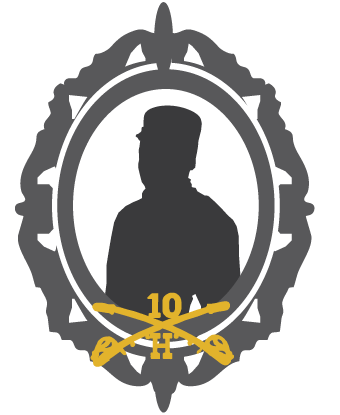Last updated: June 8, 2022
Person
Michael Finnegan

NPS/ K. Pontius & E. Glover
Michael W. Finnegan experienced many difficult times while serving in the US Army, as well as after his military career. Finnegan was in both the 10th Cavalry and 24th Infantry, and held the ranks of wagoner, private, and first sergeant.
While he was in Arizona, Troop H of the 10th Cavalry was commanded by Captain Charles Cooper. Finnegan sometimes escorted Captain Cooper's daughter on excursions. On one trip, Forrestine Cooper Hooker recounted getting a starter of yeast for bread from her neighbor Louis Prue's wife. Finnegan was carrying the yeast in a tin which exploded, and sounded like a gunshot. Forrestine was riding in front of Finnegan, and when she thought she heard a gunshot, she raced for home. She wondered why Finnegan wasn't shooting back at whoever was attacking them, and when she saw Finnegan's horse run past her, with Finnegan crouched over with grayish matter on his face, she feared the worst. Finally, Forrestine reached the cabin, where Finnegan was. "Oh Finnegan, did they shoot you?" she asked. "He turned with a broad grin, remnants of gray brains still splotched his face, but he was wiping it off with his red cotton handkerchief." It was just the yeast.
At Camp Bonita, Finnegan carved his initials “M.W.F” into a stone that was part of the Garfield Monument. He added to his stone three linked ovals, which are a sign of the Grand United Order of Odd Fellows, a black fraternal organization.
Finnegan’s first major hardship came in 1891 while he was in Troop A of the 10th Cavalry. Finnegan was returning from carrying the post mail when he was attacked and beaten until he had a fractured skull. By 1895, Finnegan asked to be reduced to the rank of private, at Ft. Bayard, New Mexico, and was later given a disability discharge. He was not content to be a retired soldier, though, so Finnegan became an Able-bodied Seaman in the United Kingdom.
He was an Engineer’s Steward starting in 1914, but because of the UK’s involvement in the early years of World War I, Finnegan decided to move back to the United States. In 1917, Finnegan returned to the UK, and found work on a British Steamer, the East Wales. The East Wales was attacked by surprise German gunfire, from a submarine U-57 on October 14, 1917, and sunk. Finnegan lost all of his possessions, including his pension papers, and three people drowned. Finnegan lived another year, and died at the Southern Branch National Home, in Virginia.
Based on his enlistments, we know Finnegan was stationed throughout the United States:
-
Ft. Apache, AZ 1889 (10th Cavalry, Troop H)
-
Ft Custer, MT 1892 (10th Cavalry, Troop A)
-
Chicago, IL 1892 (24th Infantry, Troop G)
-
Ft. Bayard, NM 1895
Almost nothing is known about Finnegan’s personal life, although his medical records indicate he suffered from syphilis and alcoholism. He wrote on one of his pension applications that he “never was married and never will be.” Much of this information was compiled first in Warriors of Color by Harold Ray Sayre. Forrestine Cooper Hooker wrote about Finnegan in her memoir, Child of the Fighting Tenth. If you have any information about Finnegan, please share it with us. Until then, this summary, and others like it, will be incomplete and imbalanced.
